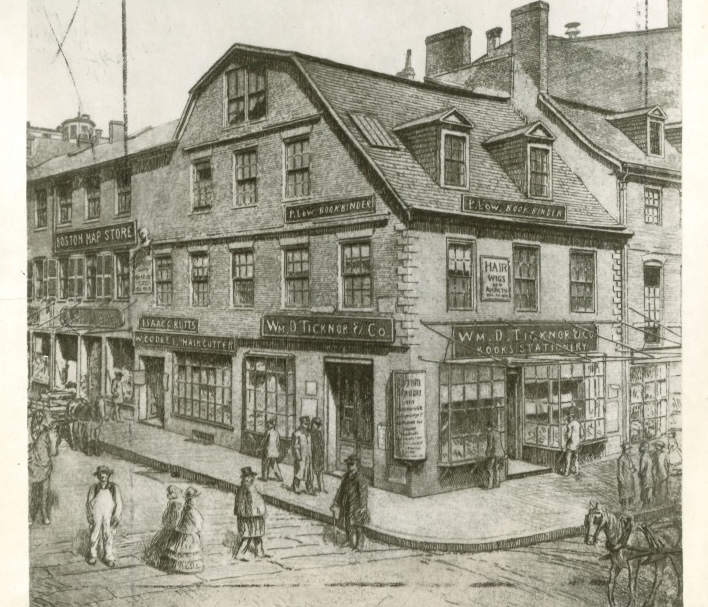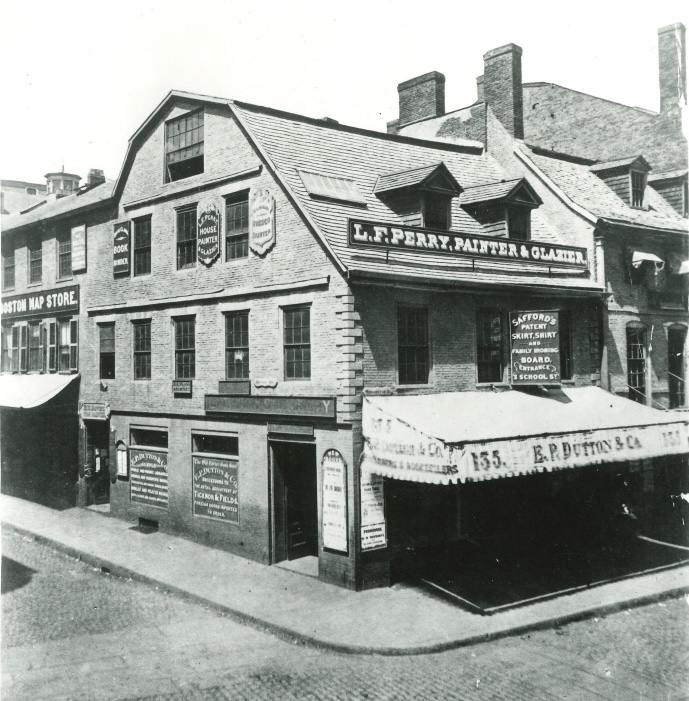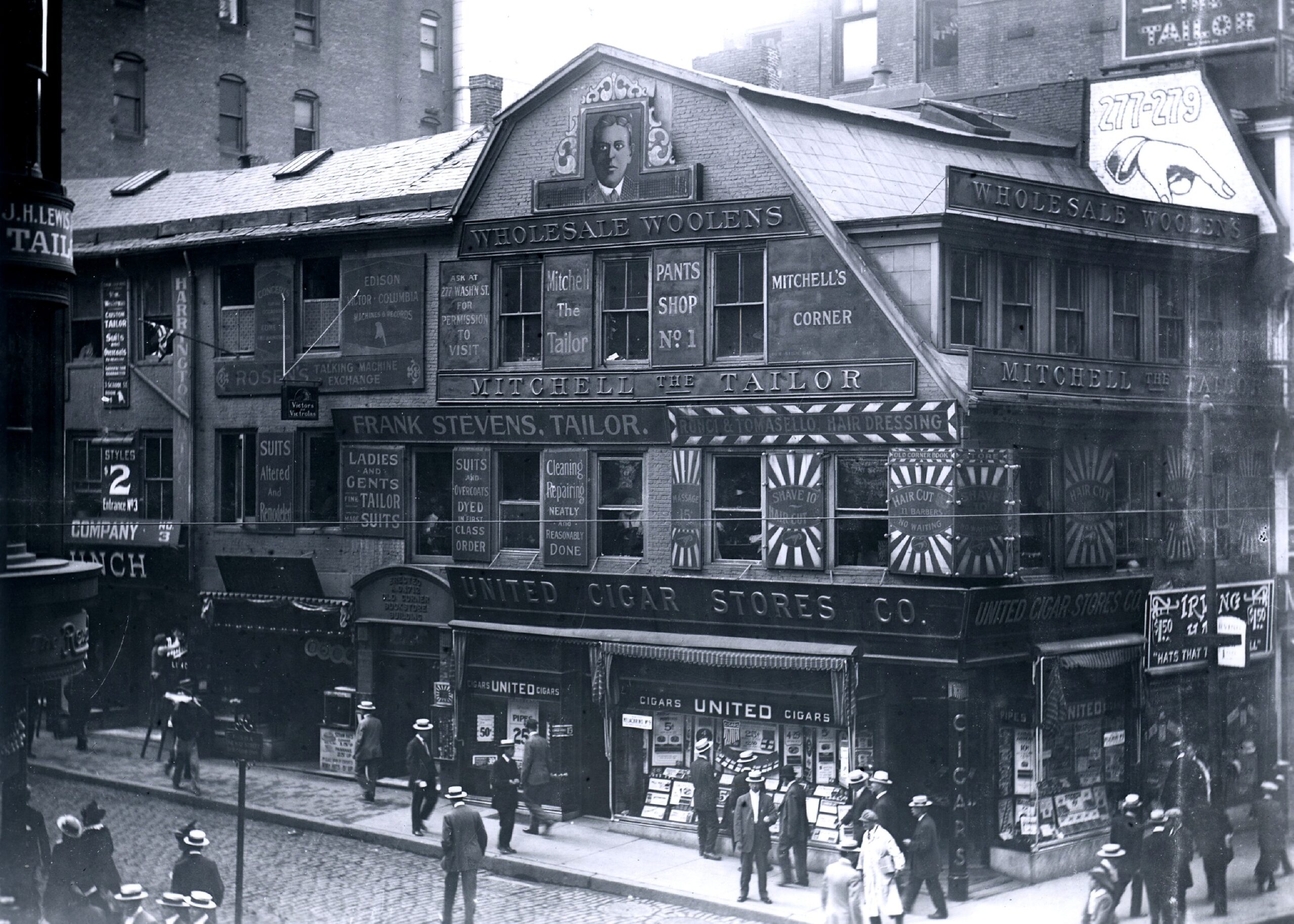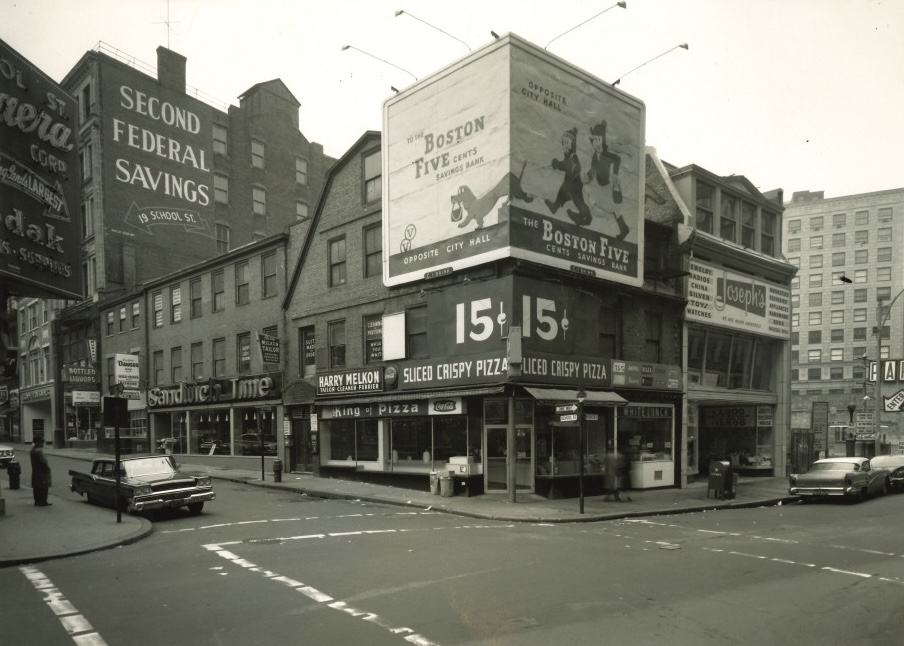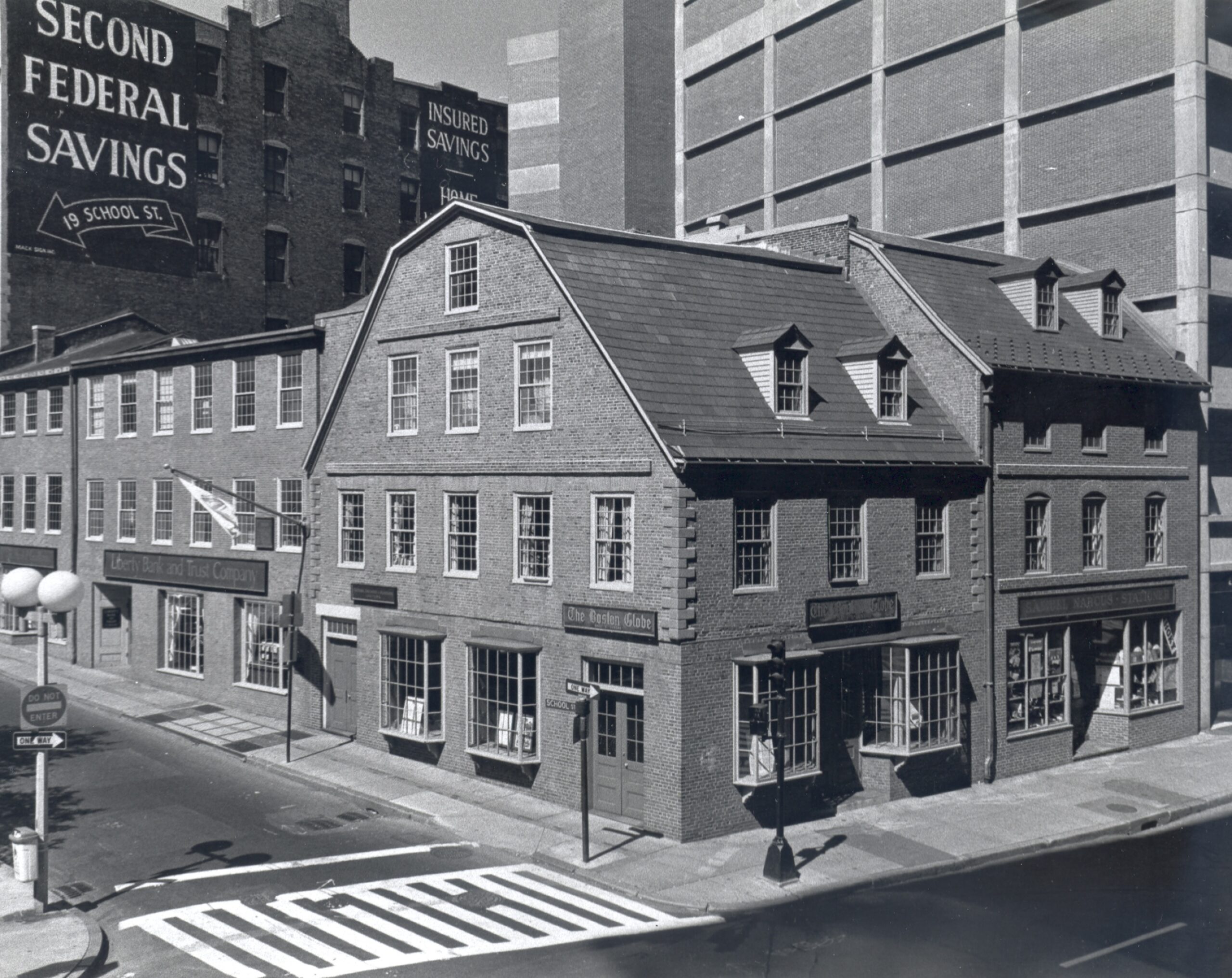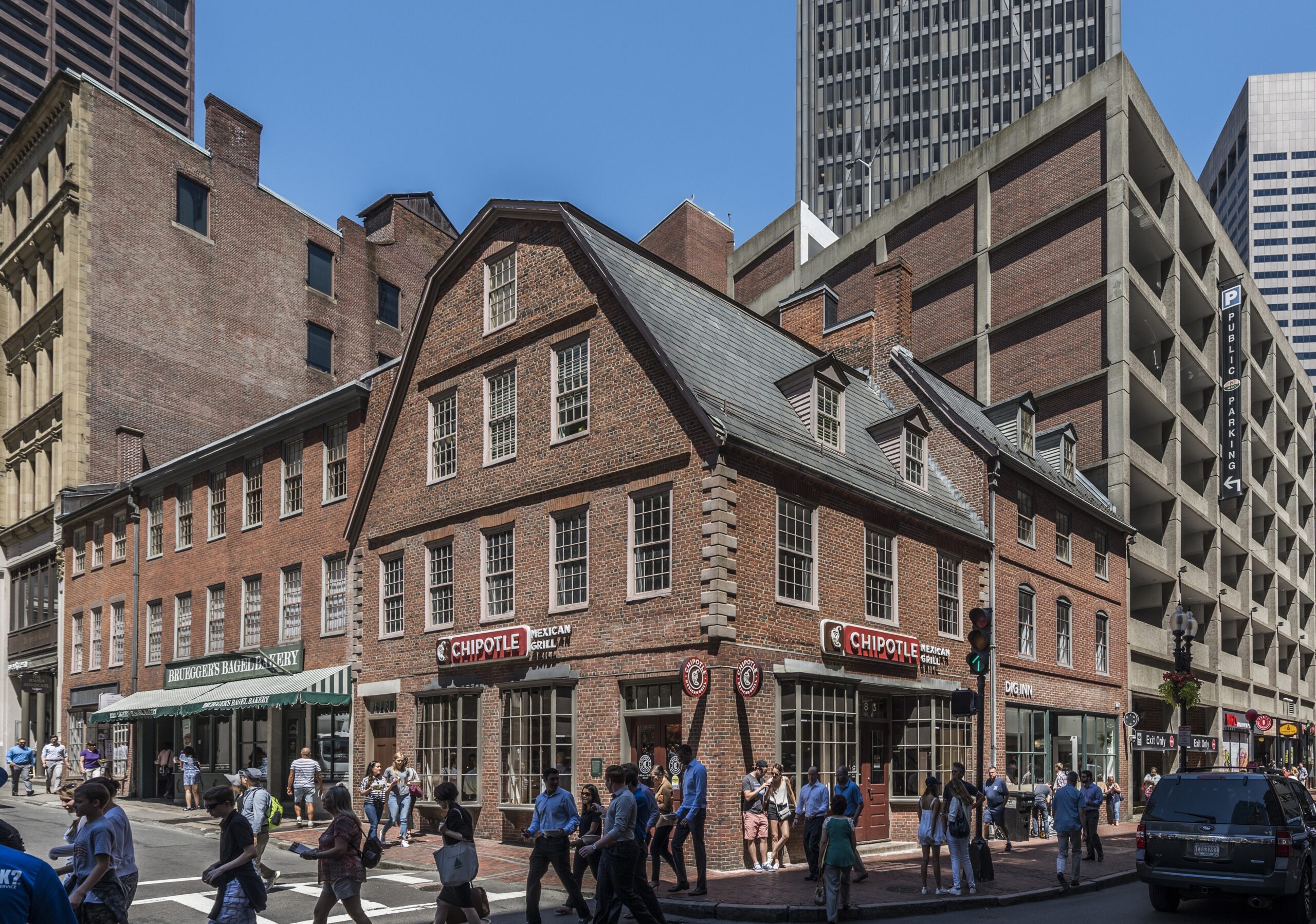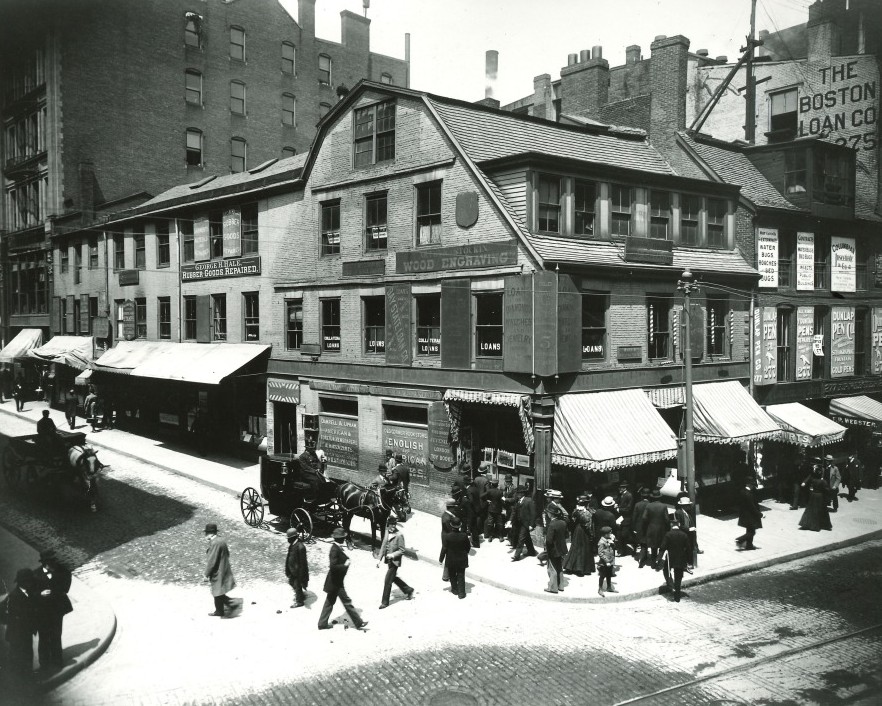
02 May 2025 Old Corner Bookstore to be considered for Landmark designation
On May 13th the Boston Landmarks Commission voted to designate the Old Corner Bookstore and adjacent Cunningham House a Landmark. The designation now awaits final approval from the Boston City Council and Mayor Michelle Wu.
While we often reference historic and cultural heritage sites as “landmarks” for how they define the identity of a place, designating a site as a “Landmark” ensures that these sites are protected with local regulatory controls. In Boston, this means that “Landmarks” are first petitioned for review, then reviewed, voted on, and designated by the Boston Landmarks Commission (BLC), a body within the Mayor’s Office of Historic Preservation. A Landmark designation ensures that any exterior alterations to historically significant structures be reviewed and approved by the BLC in an effort to “recognize and protect a physical feature or improvement that in whole or part has historical, cultural, social, architectural, or aesthetic significance.”
It may be shocking to learn that the 1718 Old Corner Bookstore (OCB), a site along the Freedom Trial has withstood the test of time without Landmark status to protect it, especially considering the environment of rapid development that has sprung up around it in downtown Boston. But the lack of urgency to designate the Old Corner Bookstore stems from Historic Boston Inc.’s trusted stewardship of this site since acquiring the complex of four 18th and 19th century buildings in 1960. For the same reason, a number of historic sites along the Freedom Trail have not yet been designated official Boston Landmarks, as they’ve been owned for generations by organizations formed for the explicit purpose of preserving them. As we eagerly await the Commission’s deliberations, we encourage you to read their draft study report of the Old Corner Bookstore and the adjacent 1728 Cunningham House to provide feedback before they vote on May 13th.
A petition to designate the OCB a Landmark was submitted in 1994. In 2023, the BLC accepted an amendment proposed by HBI to include the adjacent 1728 Cunningham House, which is one of the four structures that makes up what we call the Old Corner, in the OCB’s Landmark designation. In a celebration of this long-awaited Landmark designation, we recount the Old Corner Bookstore’s history here.
At the corner of School and Cornhill
The land the Old Corner Bookstore sits upon is the traditional homelands of the Massachusett in what they once called Shawmut. The Massachusett have lived here for over 12,000 years and their ancestors remain today. The Old Corner Bookstore was built within the original boundaries of the peninsula of Shawmut (not landfill) and so there is a strong possibility of archaeological deposits.
In the 1620s the land was owned by Isaac Jonhson, one of the Puritan founders of the Massachusetts Bay Colony. In the 1630s, William and Anne Hutchinson acquired the land and built a house upon it before Anne was banished from the colony for her role in the Antinomian Movement. Afterwards, the home had a series of owners before it was purchased by Thomas Crease in 1708. In 1711, a fire broke out that destroyed nearly 100 buildings in the area, including the former home of Anne Hutchinson. Crease rebuilt the structure historically known as the Old Corner Bookstore in 1718 as his residence and ground-floor apothecary on the corner of School and Washington Street, which was known as Cornhill Street in the 18th century.
Approximately 10 years later, Andrew Cunningham built his home adjacent to the Old Corner building at 277 Washington Street. Cunningham’s 1752 probate records indicate that he enslaved a man named Boston and a woman named Fanny. Their ages, details of their lives, and specifics of their enslavement remain unknown. They would have been left to Cunningham’s wife after his death. If they remained in the state and lived long enough, they would have been emancipated in 1783 when Massachusetts abolished the institution of slavery.
As early as 1796, 277 Washington Street housed a bookseller and in 1828 the entire complex was occupied by booksellers and publishers. In 1828, the Old Corner building and land was leased to Timothy Carter, who built the structures that today are 5,7, and 11 School Street to support the operations of his brother’s publishing house and bookstore, Carter & Hendee.
Ticknor & Fields make history, “Parnassus Corner” is born
In 1832, Carter & Hendee sold their business to John Allen and William D. Ticknor, operating under the name “Allen & Ticknor.” Successive waves of partnerships saw William Ticknor operating under the name “Ticknor & Co.” throughout the 1830s, ultimately operating under “William D. Ticknor & Co.” when he found new partners in James Fields and John Reed Jr. in 1843. By 1854, they were operating under “Ticknor & Fields,” with the innovative James T. Fields’ royalties system making them the most sought after publishers in the United States.
The general practice at the time was to simply pirate the works of English authors when there weren’t yet international copyright laws to prevent one from doing so. But Fields offered royalties as high as 20 percent, and that made him and his publishing firm a friend to many of the greatest writers of the day, English and American alike. Ticknor & Fields were the publishers of renowned English writers like Charles Dickens and Alfred Tennyson. They also demonstrated to the world that American writing had come of age in the publishing of influential works such as Henry David Thoreau’s Walden, Ralph Waldo Emerson’s Self Reliance, Nathaniel Hawthorne’s The Scarlet Letter, and Harriet Beecher Stowe’s Uncle Tom’s Cabin. Field’s was documented to have been a friend of Hawthorne’s, going so far as placing his last unfinished novel that Fields had hoped to publish on his casket. He had also developed a close relationship with Charles Dickens, notably organizing his 1867 trip to Boston where Dickens conducted the first public reading of A Christmas Carol in the United States.
For the ideals published here, the Old Corner Bookstore became a beacon of transcendentalism and abolitionist thought, fondly being called “Parnassus Corner” in its own time.
Ticknor and Fields purchased The Atlantic Monthly in 1859, which would see the previously rejected Louisa May Alcott’s stories published out of the Old Corner as well. In 1864 they acquired the North American Review. That same year, William Ticknor died of pneumonia and Fields allowed their retail business in the OCB to be taken over by E.P. Dutton & Co. Subsequently, Fields moved Ticknor & Fields publishing to 124 Tremont Street, maintaining the “Old Corner Bookstore” name. In 1869, A. Williams & Co. replaced the former in the Old Corner, and by 1883 that firm continued under the name Cupples, Upham, & Co. By 1893, the firm had collapsed. John Inches acquired the Old Corner, 277 Washington Street, and 5-11 School Street in 1898.
The Old Corner housed a variety of commercial operations throughout the 20th century, but never came close to the kind of success that graced Ticknor & Fields. The early 20th century saw tailors, restaurants, furriers, print shops, and more making a living in the historic Old Corner Bookstore. A United Cigar Store operated from the 1930s-40s. Then a Pizza City in the 1950s. And a Rosen Talking Machine Co. conducted business in the upper floors for nearly twenty years during this time.
The immortal Old Corner
In 1946 the Inches family sold the Old Corner complex to Katherine Ladd, who in turn sold them to Elliot Henderson in 1956. By the 1960s, the land these four 18th and 19th century buildings sat upon were seen as more valuable than the buildings themselves and they were slated for demolition as plans for a parking garage loomed large in downtown urban renewal efforts. Instead a group consisting of historians, realtors, and preservationists banded together to save this rare example of early colonial Georgian architecture in the heart of Boston.
The group included Walter Muir Whitehill, Director of the Boston Athenaeum, Bertram K. Little, Director of what is today known as Historic New England, David McCord, a Harvard poet, John Codman, a realtor, and Roger A. Moore, President of the Beacon Hill Civic Association. They established Historic Boston Incorporated in 1960. After successfully rehabilitating the Old Corner Bookstore– which was restored to its 1828 appearance– this group sought to push their vision for preservation and the benefits it could bring to a neighborhood, outwards to ripple throughout all of Boston. In 1979 HBI became a nonprofit developer extending its vision for the OCB to the rest of Boston.
The Old Corner Bookstore’s modern uses today may at first glance betray its storied past, but the “Old Corner,” the beacon of radical thought that it was and is remembered for, has endured in its becoming a home for Historic Boston Incorporated. HBI departed from the traditional historic preservation movement with its rehabilitation and adaptive reuse of the OCB. In setting out to demonstrate that historic structures can be preserved, not as museums, but as places of business that could contribute to municipal tax revenues and provide job opportunities, in addition to preserving the culture, identity, and human experience of a place, the the founders of HBI had a radical thought for a site once fertile in the flourishing of new and daring ideals. For the past 45 years, revenues from the OCB have allowed HBI to preserve, rehabilitate, and bring new use to over a dozen similarly endangered historic sites across Boston.
As the complex is considered for Landmark designation, Historic Boston is in the midst of efforts to re-envision what visitor and occupant experience could be at the Old Corner Bookstore. The OCB has a rich history waiting to be told and restoring historic exterior interpretation and signage will be one way to assure its historic influence remains in public memory. Presently, HBI is set to begin a window replacement and facade repair project as the first phase of a larger project to bring the Old Corner into the 21st century structurally, mechanically, and interpretively. One element of this first phase is the recreation of a loading door at the 3rd floor of 11 School Street to reflect its 19th century appearance and the light industry that occurred in that space when it was housed by publishers. This phased project also includes HBI’s long-held ambition to make the entire Old Corner Bookstore complex ADA accessible. In supporting HBI’s latest vision for the Old Corner Bookstore on the eve of the nation’s 250th, we are collectively taking actionable steps towards a revolution in site interpretation, experience, and use that the great authors published here would be proud of.




